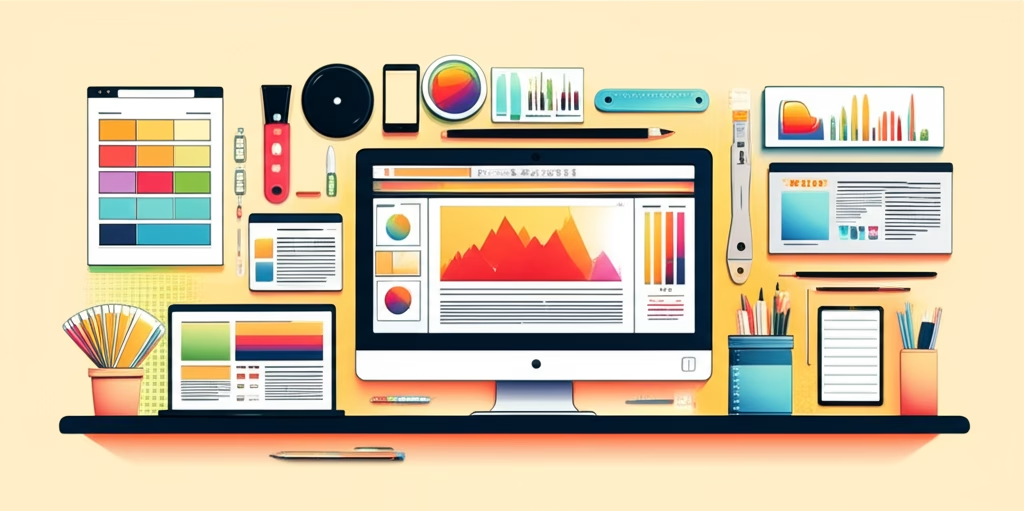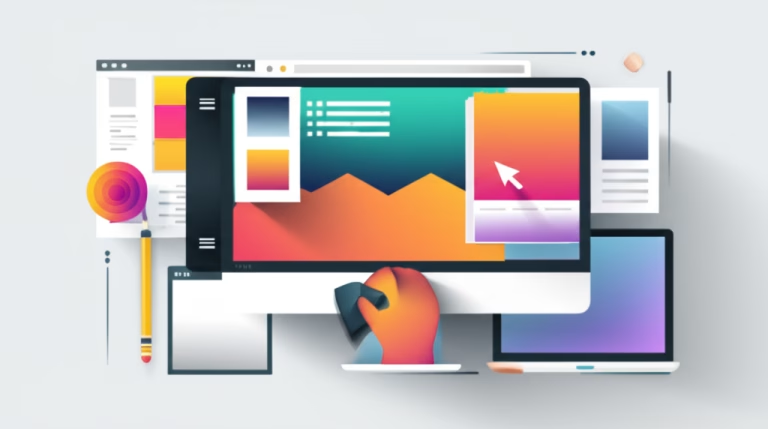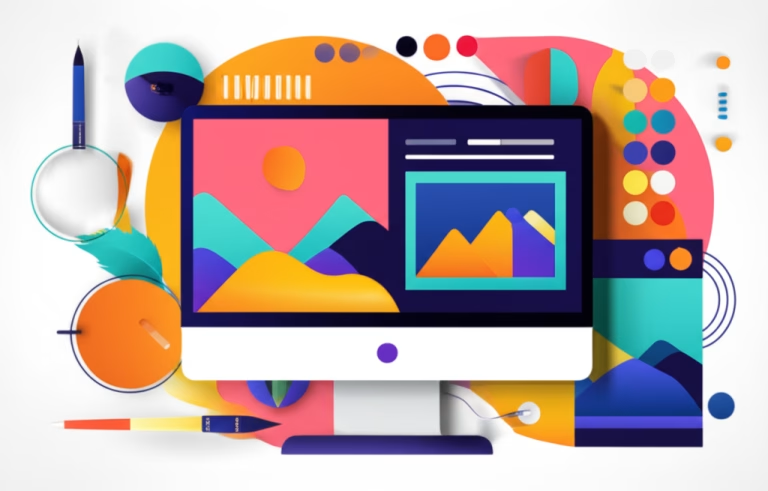Freelancing in Graphic Design: A Beginner’s Guide
Introduction
Thinking about turning your graphic design skills into a career? Freelancing can be an amazing path, offering flexibility and control over your work. But where do you even start? It can seem daunting, especially when you’re just beginning. This guide breaks down everything you need to know about freelancing in graphic design, from understanding the basics to landing your first clients. We’ll cover essential principles, common mistakes, and actionable steps to help you launch your freelance journey with confidence.
Table of Contents
What is Freelancing in Graphic Design?
Freelancing in graphic design means offering your design services to clients on a project basis, rather than being a full-time employee of a single company. As a freelance graphic designer, you’re essentially your own boss. You manage your own time, choose your projects, and set your own rates. This can include a wide range of services, such as logo design, website design, branding, marketing materials, and more. It’s about using your creative skills to solve visual communication problems for various clients.
Why is Freelancing Important in Design?
Freelancing offers incredible opportunities for graphic designers. It provides flexibility to work on diverse projects, expanding your skillset and portfolio. You gain control over your career path, choosing projects that align with your interests and values. Freelancing also allows you to set your own rates, potentially earning more than in a traditional employment setting. Furthermore, it fosters entrepreneurial skills, teaching you how to manage your business, market yourself, and build client relationships. It’s a pathway to independence and creative fulfillment.
Basic Principles / Rules / Tools of Freelancing in Graphic Design
To succeed as a freelance graphic designer, understanding some key principles, rules, and tools is crucial:
Portfolio: Showcase your best work. A strong portfolio demonstrates your skills and style to potential clients.
Pricing: Determine your rates based on your experience, the complexity of the project, and market standards. Research industry rates and factor in your overhead costs.
Contracts: Always use contracts. A contract outlines the scope of work, payment terms, deadlines, and other important details, protecting both you and the client.
Communication: Maintain clear and consistent communication with your clients. Keep them updated on your progress and promptly respond to their inquiries.
Time Management: Manage your time effectively. Set realistic deadlines and prioritize tasks to ensure you meet your commitments.
Networking: Build your network. Connect with other designers, potential clients, and industry professionals. Networking can lead to new opportunities and collaborations.
Software: Master essential design software like Adobe Photoshop, Illustrator, and InDesign. These tools are the foundation of your design work.
Online Platforms: Utilize online platforms like Behance, Dribbble, and LinkedIn to showcase your work and connect with potential clients.
Common Mistakes in Freelancing (and How to Avoid Them)
Navigating the world of freelancing can be tricky. Here are some common mistakes to watch out for:
Mistake: Undervaluing Your Work
How to Avoid: Research industry rates and factor in your experience and skills. Don’t be afraid to charge what you’re worth.Mistake: Poor Communication
How to Avoid: Respond promptly to client inquiries, provide regular updates, and clearly communicate your process and expectations.Mistake: Lack of a Contract
How to Avoid: Always use a contract that outlines the scope of work, payment terms, deadlines, and other important details.Mistake: Not Managing Finances
How to Avoid: Track your income and expenses, set aside money for taxes, and create a budget to manage your finances effectively.Mistake: Neglecting Marketing
How to Avoid: Continuously market yourself and your services. Build your online presence, network with potential clients, and showcase your work.Mistake: Burning Out
How to Avoid: Set boundaries, manage your time effectively, and prioritize self-care to avoid burnout. Take breaks and schedule time for personal activities.
Step-by-Step: How to Apply Freelancing in Your Projects
Ready to start freelancing? Here’s a step-by-step guide to get you started:
Step 1: Build Your Portfolio: Create a portfolio showcasing your best work. Include a variety of projects that demonstrate your skills and style. If you lack real-world projects, create some spec work to demonstrate your abilities.
Step 2: Define Your Niche: Identify your area of expertise. Focusing on a specific niche can help you attract clients who are looking for specialized skills.
Step 3: Set Your Rates: Research industry rates and determine your pricing based on your experience, skills, and the complexity of the project. Consider offering different pricing packages to cater to various client needs.
Step 4: Create a Contract Template: Develop a contract template that outlines the scope of work, payment terms, deadlines, and other important details. Consult with a lawyer to ensure your contract is legally sound.
Step 5: Build Your Online Presence: Create a website or online profile showcasing your portfolio, services, and contact information. Use social media platforms like LinkedIn, Behance, and Dribbble to connect with potential clients and share your work.
Step 6: Network and Market Yourself: Attend industry events, join online communities, and connect with potential clients. Market yourself through social media, email marketing, and online advertising.
Step 7: Find Your First Clients: Start by reaching out to your network, offering your services to friends, family, and former colleagues. Explore online freelancing platforms like Upwork and Fiverr to find projects.
Step 8: Deliver Excellent Work: Provide high-quality work that meets or exceeds your clients’ expectations. Communicate effectively, meet deadlines, and be responsive to their needs.
Step 9: Get Testimonials and Referrals: Ask satisfied clients for testimonials and referrals. Positive feedback can help you attract new clients and build your reputation.
Step 10: Continuously Improve: Stay up-to-date with the latest design trends and technologies. Continuously improve your skills and expand your knowledge to stay competitive in the market.
Frequently Asked Questions (FAQ) about Freelancing in Graphic Design
Q: What’s the best software for beginners in graphic design freelancing?
A: Adobe Creative Cloud (Photoshop, Illustrator, InDesign) is industry-standard, but can be pricey. Consider Affinity Designer or Canva as more affordable alternatives to start.
Q: How do I set my rates as a freelance graphic designer?
A: Research average rates for similar services in your area. Factor in your experience, the complexity of the project, and your overhead costs. Don’t be afraid to charge what you’re worth!
Q: How important is a portfolio for freelance graphic design?
A: Extremely important! Your portfolio is your primary tool for showcasing your skills and attracting clients. It should highlight your best work and demonstrate your design style.
Q: Where can I find freelance graphic design clients?
A: Start with your network, online job boards (like Indeed), freelance platforms (Upwork, Fiverr), and social media. Networking and building relationships are key!
Conclusion
Freelancing in graphic design offers a rewarding path for creative individuals seeking independence and flexibility. By understanding the basics, avoiding common mistakes, and following a structured approach, you can launch a successful freelance career. Remember to build a strong portfolio, set your rates appropriately, and continuously market yourself. With dedication and perseverance, you can turn your passion for graphic design into a thriving business.



